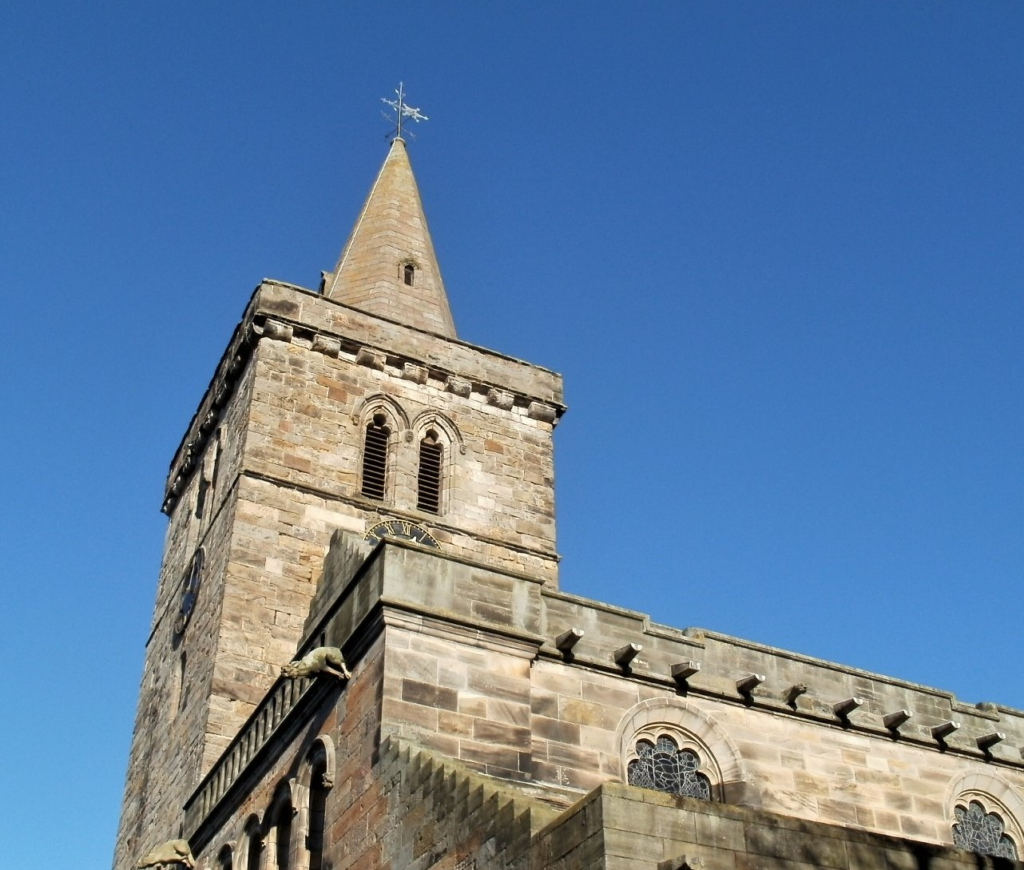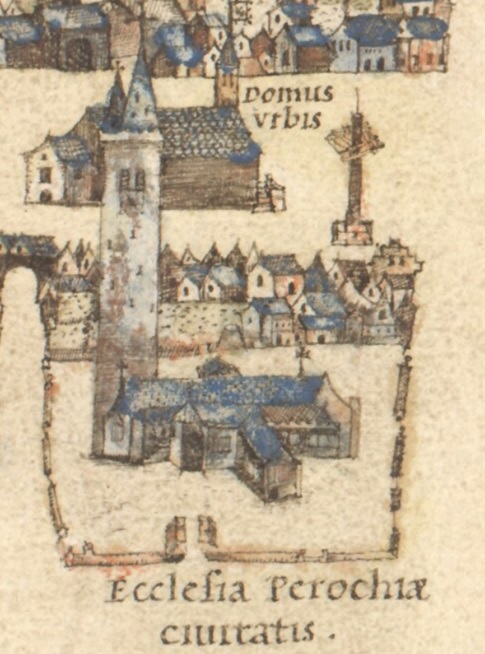
The parish church of Holy Trinity is one of the largest and most richly decorated buildings in St Andrews. It occupies a prominent site on South Street and its tower can be seen from many miles outside the burgh. There has been a church dedicated to Holy Trinity in St Andrews for more than 800 years. Yet the design of the church has changed significantly over time.
The origins of Holy Trinity go back to at least the 12th century, when the residents of St Andrews had a parish church near the Cathedral. In 1410 the local nobleman Sir William Lindsay of the Byres gave St Andrews’ citizens land on South Street (near the residential and commercial heart of the community), and the parish church of Holy Trinity was relocated to its current site. Lindsay ordered the construction of a church with a row of pillars on either side, and a chapel with his coat-of-arms in stained glass.

Over succeeding centuries Lindsay’s original church was repeatedly redesigned, as religious priorities changed. In 1559 the Protestant preacher John Knox used a sermon at Holy Trinity to encourage the residents of St Andrews to reject Catholicism and to remove all ‘monuments of idolatry’. Some local people welcomed this message with enthusiasm and rapidly set about stripping Catholic images and altars from Holy Trinity and other religious sites in the area (including St Andrews Cathedral). The interior of Holy Trinity was then rearranged to enable a greater focus on preaching. During the 17th and 18th centuries further changes were made to the architecture of Holy Trinity. Windows were altered, the roofline shifted, and the transept on the north side of the church was demolished.
Around 1800 Holy Trinity was almost entirely remodelled, destroying much of the original medieval architecture (although the tower and a few pillars were preserved). This early 19th century building was itself demolished in 1907, and replaced by the church we see today – a Gothic building, designed by the notable ecclesiastical architect Peter Macgregor Chalmers. Holy Trinity is still home to an active Church of Scotland congregation. It is also a popular venue for public talks and concerts – another phase in the complex story of Holy Trinity.

